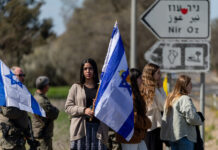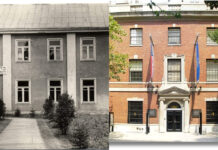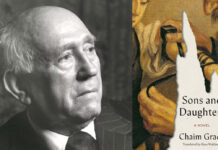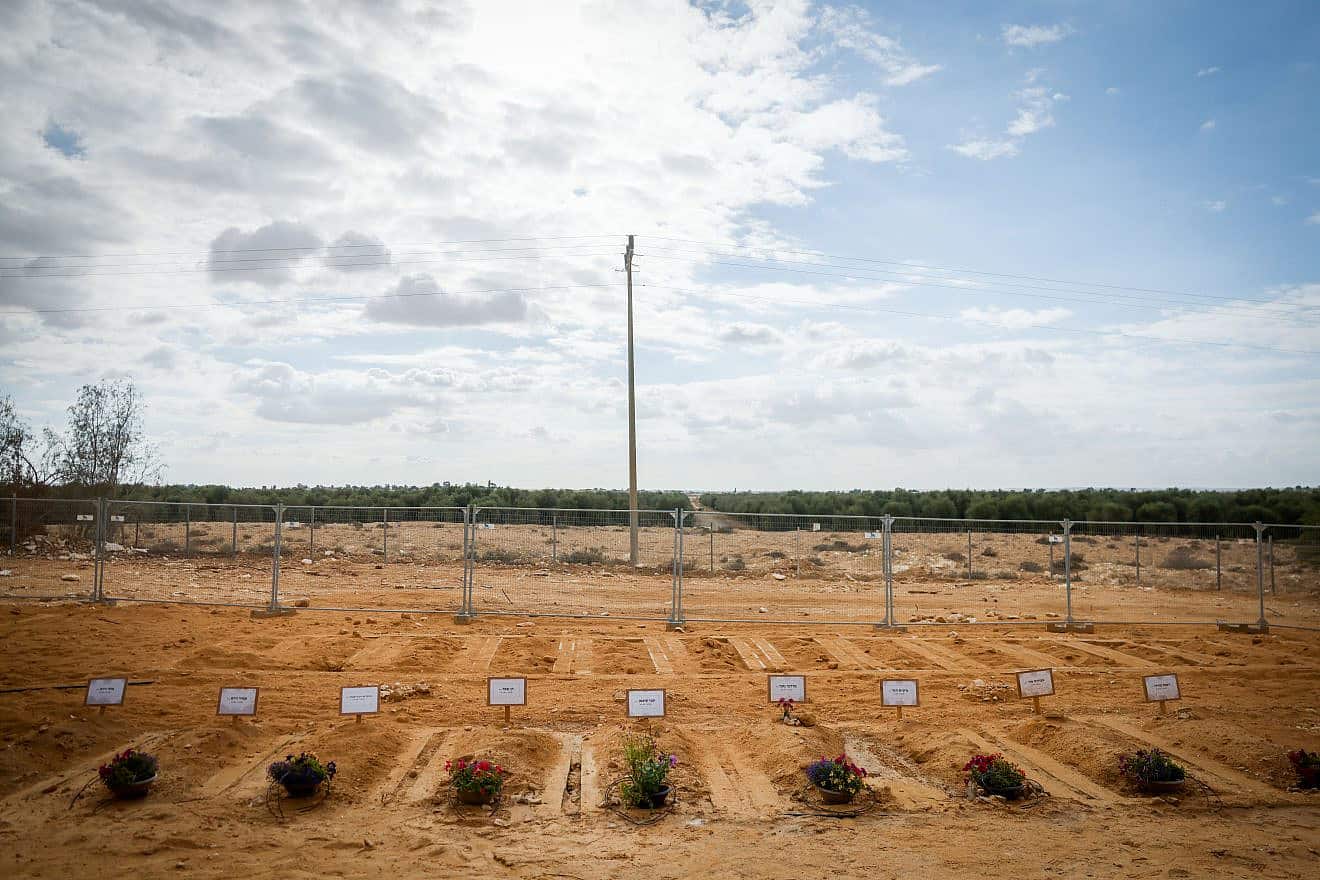As word came that murderous hordes were approaching, the Jews attempted to flee. Those who could not, barricaded themselves indoors and prayed for a miracle.”
This moving narrative describes not the shocking events of Oct. 7, 2023, in Kibbutz Be’eri and other communities in Israel, but the massacre of eastern European Jews nearly 400 years earlier by Cossacks during the 1648 Khmelnitsky pogroms, in what is now Ukraine.
Although Jewish settlements in the greater Kievan Rus region, Ukraine and Crimea included, can be traced to the 8th to 10th centuries, a record of pogroms took some time to emerge. Not limited to the Rus region, pogroms were widespread in Middle Age Europe as a whole. In the Rhineland area, the First Crusade of 1096 led to mass slaughter of Jews who had settled there, and the same later in Palestine when the Crusaders arrived. In England, the York pogrom of 1190 resulted in the expulsion of Jews from the land for nearly 400 years.
The long and woeful history of eastern European pogroms: the massacre of innocent, peace-loving Jews in their small villages, their shtetls, commenced about a thousand years ago and continues today. Out of these pogroms came the words of Rabbeinu Gershom, who in the 10th century wrote in his work “Zechor Brit Avraham” (Recall the Covenant of Abraham):
“Wounds, bruises, and fresh blows
are inflicted on the daughter of Israel
She is pained and embittered in a foreign land
hunted like a bird from Mt. Moriah.”
The year 1391 witnessed the infamous Spanish pogrom in which Sephardic Jewish communities were destroyed, and those who refused to convert to Catholicism murdered. By 1492, the date of final expulsion, there were few, if any, openly practicing Jews left in Spain.
Nearly 400 years later, in 1881, a continuous four-year pogrom occurred in southern Russia, when thousands of shtetls with their Jewish occupants were eliminated. With numerous pogroms in between, some 40 years thereafter, between the years of 1918 and 1920, major pogroms were instigated throughout Ukraine, in which more than 250,000 Jews were murdered. The mass migration of Ashkenazi Jews from Ukraine and Russia to America can be traced to those events.
Only one day after Israel’s declaration of Independence in 1948, “murderous hordes,” like the Cossacks of old, once again sought to purge Jews in the region through an existential attack by five Arab armies. This time was different, however: the Jews had weapons and successfully fought back.
In 2021 at the city of Lod, Israel, an intended pogrom of “violence and terror” by contemporary “murderous hordes” was attempted, but fortunately with limited success. In a repeat of history, and despite relocation to their ancestral homeland of Israel, Jews were forced once again to “barricade themselves in their homes in fear of the rampaging mobs while others chose to flee the city until calm was restored.” Still, this was not yet the Be’eri pogrom of 2023.
Just as the Jewish community in the European diaspora was typified by the shtetl, so the early Jewish community in Israel was characterized by the kibbutz, again a little village, established by displaced Jews from Europe in the enduring concept of communal shtetls. Shtetls were located in foreign lands, among alien cultures but not seeking assimilation, and near people invariably hostile to Jews. In his earnest way, the Russian Zionist Ze’ev Jabotinsky (1880-1940) described this situation: The Jew, he said, “is accustomed to living by a culture while another is inaccessible to him, and he has nowhere to go.”
Notwithstanding their location within Israel, most kibbutzim are little different. Kibbutz Be’eri, for instance, is situated near Gaza—home of jihadists determined to eradicate Jews from their promised land. Likewise, Kibbutz Nahal Oz is only some 900 yards from the Gaza border.
The kibbutzim might be regarded as modern-day versions of early shtetls. Their close-knit communities have similar characteristics to shtetls of the past, but with the possible exception of the strong religious component so dominant in the Jewish communities of eastern Europe. It is from the latter that the Hasidic movement originated.
Reminiscent of the Khmelnitsky pogrom of 1648, and many others, early one quiet and peaceful October morning in 2023, the residents of Kibbutz Be’eri were suddenly overpowered by “murderous hordes” of well-armed jihadist Hamas terrorists. Primarily driven by hatred of Jews, in their wrath the terrorists mercilessly murdered, tortured, raped and captured both Jews and non-Jews irrespective of age, race, gender, ethnicity, religion or nationality.
Survivors were dragged off as prize hostages, as treasure, to dark dungeons deep under the earth in Gaza, to be further abused. In this dreadful way, the Islamist jihadists resembled the Roman General Titus, who carted off Temple treasure and Jewish captives to Rome in order to boast of his conquest. The Arch of Titus in Rome depicts these scenes, as do Hamas’s video images of their “conquest” of the Jews nearly 2,000 years later.
“There is no cruel device of murder in the whole world that was not perpetrated by [our] enemies,” Rabbi Nathan ben Moses Hannover wrote in 1653, in describing the wanton violence of pogroms. This account, from centuries before, very much applies to the events of Oct. 7, 2023. Hannover’s statement is reflected in the words of the poet Hayim Nahman Bialik, whose description of the 1903 pogrom in Kishinev (today’s Chișinău, Moldova), are reminiscent of what rescuers, friends and neighbors saw after the modern-day pogrom of 2023 at the Be’eri shtetl:
“Get up and walk through the city of massacre,
And with your hand touch and lock your eyes
On the cooled brain and clots of blood
Dried on tree trunks, rocks, and fence; It is they.”
Yes, it is they—the remnants of those precious friends and family whose existence and presence was treasured by all who knew them. It is they who will never be forgotten; whose suffering and violent deaths will forever be mourned.
The social compact between the State of Israel and immigrants making aliyah (“going up” to Israel) is the implied understanding that they will no longer have to live in fear, that they will be safe, and that there will be no more horrific pogroms like their forebears experienced from Cossacks and the like. The state would protect them and they would be empowered to participate. “The premise of Zionism is that Jews could again assume responsibility for themselves in history,” the author Jonathan Silver frames it. “No one else would vouchsafe and protect the Jewish people other than the sovereign Jewish state.”
In Zion, they could be secure at last, itinerant no more, settled in their longed-for ancestral homeland. Zion, the yearning of displaced Jews of the world—those hounded from place to place for countless generations, unable to establish permanent roots and living in constant fear.
Psalm 137 recounts the ancient yearning lament:
“How shall we sing the Lord’s song in a foreign land? If I forget you, O Jerusalem, let my right hand forget its skill!”
It is recited on Tisha B’Av (the 15th of the Hebrew month of Av), the date of destruction of the First and Second Temples, both built on the Temple Mount in Jerusalem—the first destroyed by the Babylonian King Nebuchadnezzar in 587 BCE, around 400 years after King Solomon had built it; and the second destroyed by the Romans in 70 C.E.
Yet a safe haven in Israel was not to be. Due to a catastrophic failure in vigilance and intelligence, and belated intervention by the Israeli military, the “murderous hordes”—those callous murderers of men, women and children feared for centuries by Jews wherever they lived—again terrified residents of shtetls, in this instance that of Be’eri, murdering them without mercy. In total, 132 people of all ages were murdered there (including a 10 month old baby) with another 32 taken hostage into Gaza, home of neo-Amalekite hordes. Much of the community’s property and infrastructure, that which they had labored so hard for decades to develop, was destroyed in a manner harkening back to the pogroms of old.
Dovid Margolin confesses:
“The truth is that somewhere deep down we knew this, and we always doubted the modern world’s assurances that we were safe. In the back of our minds, we knew that we had an option: Israel. Because Israel was strong, every ensuing military setback was crowned by an eventual victory. Over time we forgot.”
To their horror, all the violence and all the fear that immigrants to Israel had come there to escape found them and their descendants once again, and took a deadly toll.
The Be’eri shtetl is only one of 22 Israeli towns and villages that were attacked that day. At the kibbutzim and surrounding areas, a total of around 1,200 people were murdered (including 36 children), thousands more wounded, and more than 250 others abducted (including 30 children)—Jews and non-Jews, Israelis and foreigners, males and females, young and old, civilians and soldiers. It was purposed slaughter, a repeat of the European massacres.
Today, the vulnerable Jewish shtetls of old no longer exist. Israelis have weapons now, with the state behind them and the Israel Defence Forces in front; they have become warriors themselves. They rise up and embrace their age-old heritage as descendants of that great fighter of Judah, King David, and his undefeated army of mighty men—warriors forged through hardships while in their own shtetl—the communal caves of Adullam near Gaza, home of sworn enemies, the Philistines.
The jihad of Oct. 7, 2023 occurred as a result of critical state failures, but it is hopeful that such a vacuum of protection will not occur again. The lessons have been learnt. Should anyone now come, the Jews will be ready for them. The days of defenseless Jews are over. It was the prophet Moses who set before the Hebrews the values of the Torah and it is the Torah which grants Eretz Yisrael (the Land of Israel) to the Jews in perpetuity. It is the Torah that underlies the essence of Jewish life and it is the same Torah that authorizes, in fact obligates, the Jews to defend themselves.
As the people of Israel rebuild their destroyed communities they, like the early kibbutzniks who in the manner of their ancestor Nehemiah and his people, will now work while armed and alert ready for the next battle. Let the contemporary hordes be warned: the Jews are prepared and shall “break them with a rod of iron and dash them in pieces like a potter’s vessel.” This divine forecast, given to King David, is of enduring pertinence to the Jews of Israel, even today. So, let the murderers of Jews be aware they have “touched the apple of His eye” and there is a heavy price to be paid.
The final words here belong to two prominent Jews.
The 11th President of Israel, Isaac Herzog (whose Irish-born father, Chaim Herzog, was Israel’s sixth president), on Jan. 14, 2024, after one hundred days of the Gaza war:
“Together, as one nation, we will overcome the darkness, rise from the ashes, rebuild, replant, affix mezuzahs on homes, turn each hell into a paradise, as we have always done. The spirit of the people of Israel will always overcome.”
The late Rabbi Jonathan Sacks, who was chief rabbi of the United Kingdom from 1991 to 2013:
“The fate of Haman has been throughout history the fate of individuals and nations: that those who try to destroy the Jewish people end by destroying themselves.”
Am Yisrael Chai [the People of Israel Live].
Originally published by the Gatestone Institute.
























